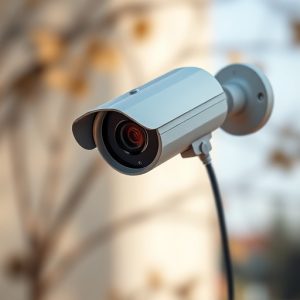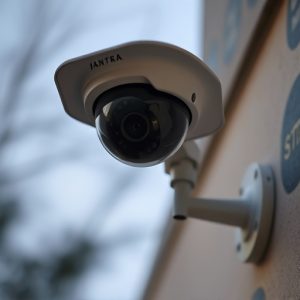Crafting Realistic Fake Security Cameras: Placement, Design, Ethics
Realistic fake security cameras rely on precise fake camera placement angles of 30-45 degrees above…….
Realistic fake security cameras rely on precise fake camera placement angles of 30-45 degrees above eye level, mimicking natural mounting heights in bustling cities. By considering shadows and reflections, adding depth and authenticity is achieved. Careful engineering uses durable materials to replicate authentic components, making them suitable for outdoor conditions. Strategic placement in public areas enhances security without invading privacy, with regular maintenance and professional consultation ensuring their effectiveness.
“Uncover the art of realistic fake surveillance equipment in this comprehensive guide. From understanding the subtle nuances of fake security camera placement angles to exploring advanced materials and techniques, we delve into creating convincing fakes. This article navigates the balance between realism and ethical considerations, offering best practices for responsible implementation. Discover how to master the craft, ensuring your creations remain undetected while providing a sense of enhanced security.”
- Understanding Fake Security Camera Placement Angles
- Designing for Realism: Materials and Techniques
- Ethical Considerations and Best Practices
Understanding Fake Security Camera Placement Angles
When it comes to realistic fake surveillance equipment, understanding the fake security camera placement angles is key. These seemingly subtle details can make or break the illusion. Cameras should be positioned at natural, human-like angles—typically between 30 to 45 degrees above eye level— mirroring the way real cameras would be mounted. This avoids the “stare down” effect that often gives away a fake’s artificiality.
Paying attention to surrounding elements like shadows and reflections can also enhance realism. A well-placed shadow cast by the camera itself or onto nearby objects can add depth and authenticity. Reflections in windows or other surfaces should be consistent with the angle of the supposed camera view, further blurring the line between fact and fiction.
Designing for Realism: Materials and Techniques
In the realm of creating realistic-looking fake surveillance equipment, attention to detail is paramount. Designers and manufacturers employ a multitude of techniques to ensure that each component appears authentic, from the casing to the lenses and sensors. High-quality materials play a crucial role in achieving this realism. Realistic fake security cameras often feature casings made from durable plastics or metals that mimic the texture and appearance of their functional counterparts. These materials are carefully chosen to withstand outdoor conditions if placed in public areas, ensuring longevity without compromising visual accuracy.
When it comes to camera placement angles, experts consider various factors. The angle at which a fake security camera is positioned can greatly impact its realism. By studying real surveillance setups, they replicate the typical mounting heights and oblique viewing angles found in bustling metropolises. This involves precise engineering to ensure the cameras appear naturally installed, whether mounted on walls, poles, or hidden within structures. Such attention to detail not only enhances the visual appeal but also serves as a game-changer for film sets, temporary events, and other scenarios requiring convincingly fake surveillance equipment.
Ethical Considerations and Best Practices
When integrating realistic-looking fake security cameras, ethical considerations are paramount. It’s crucial to balance the benefits of enhancing physical security with potential privacy concerns. Placement angles should be strategic, mimicking genuine camera positions while avoiding areas that intrude upon reasonable expectations of privacy. For instance, placing fakes in obvious public spaces like lobbies or entryways can deter crime effectively without raising ethical red flags.
Best practices involve regular review and maintenance to ensure the authenticity of these devices remains convincing. Keeping them updated with the latest technological advancements in fake camera design helps maintain their realism. Additionally, consulting with security professionals can provide insights into optimal placement angles and strategies for maintaining a secure environment while respecting individual privacy rights.
Realistic-looking fake surveillance equipment can be a valuable tool for enhancing security while maintaining privacy. By understanding optimal fake security camera placement angles, employing creative materials and techniques, and adhering to ethical best practices, individuals and businesses can effectively utilize these decoys to deter crime without compromising personal data. Incorporating realistic fakes into your security strategy offers a versatile, cost-effective solution to strengthen overall safety measures.


